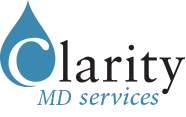The restrictions on income splitting and passive investment in the corporation introduced in the last budget have forced most physicians to rethink their income distribution and saving strategies. Issues such as paying out dividend vs salary, and saving in the corporation vs personally (RRSP, TFSA) would probably have come up in your last discussions with the accountant or advisor. However, one often-overlooked area is funding your children’s education.
How it has been?
When it comes to saving for the children’s education, there has always been a debate between funding the RESP to take advantage of the 20% government grant and investing the savings in corporation. The issue around RESP is that it isfunded with after-tax dollars. In other words, you pay taxes to withdraw money from the corporation to fund the RESP and use the 20% grant to offset the tax you paid. When we compared the two education funding options (corporation vs RESP), saving in corporation generally has a slight tax advantage but not by much. For most physicians, funding the RESP is still the preferred strategy (myself including) because it has a more predictable trajectory and is less likely to be affected by future tax and political changes. The tax change earlier this year is the evidence of this belief.
Although the RESP’s lifetime contribution limit is $50,000 per child, most physicians would only contribute up to the amount ($36,000) that qualifies for the$7,200 grant. That is because, as previously mentioned, using after-tax dollars to fund the RESP without the matching grant is not as efficient as saving in the corporation and paying the dividends to the children when they turn eighteen.
How it should be going forward?
Without the ability to income split with children, one may wonder if it makes sense to fund the RESP to the $50,000 limit. I still have a mixed feeling on this strategy because there is always a chance that income splitting may return in the future (at least that is what I hope) and paying unnecessary taxes today to fund a goal that happens 15 to 20 years from now is hard to swallow. One thing for sure is that funding your children’s education will require a lot more financial planning, becausepaying them $40,000 almost tax-free when they turn eighteen is a thing of the past. The following chart will give you an idea of the increase on tuition for varies programs in the past 10 years.
Clarity MD Services
Friendly reminders:
The best time for tax planning is the last quarter of the year. Please reach out to us if you require any assistance to plan for your 2019 income distribution.
The OMA OPIP coverage's subsidized funding is significantly reduced for 2019. You should reevaluate your needs to see if change is necessary.











